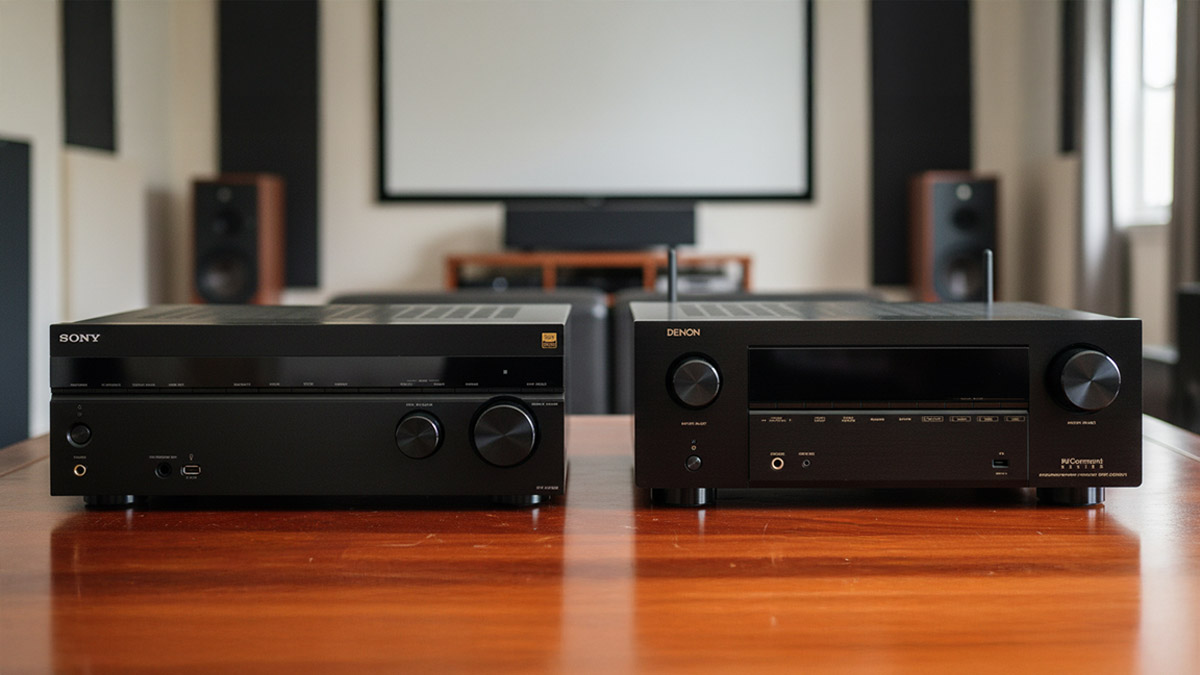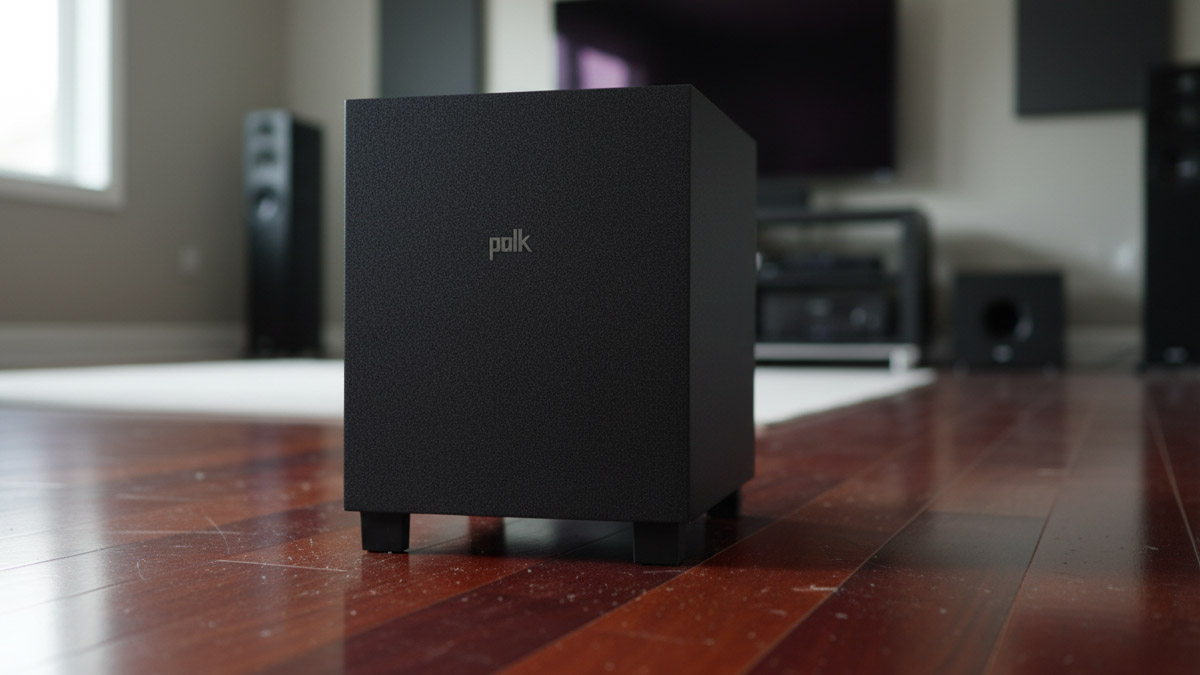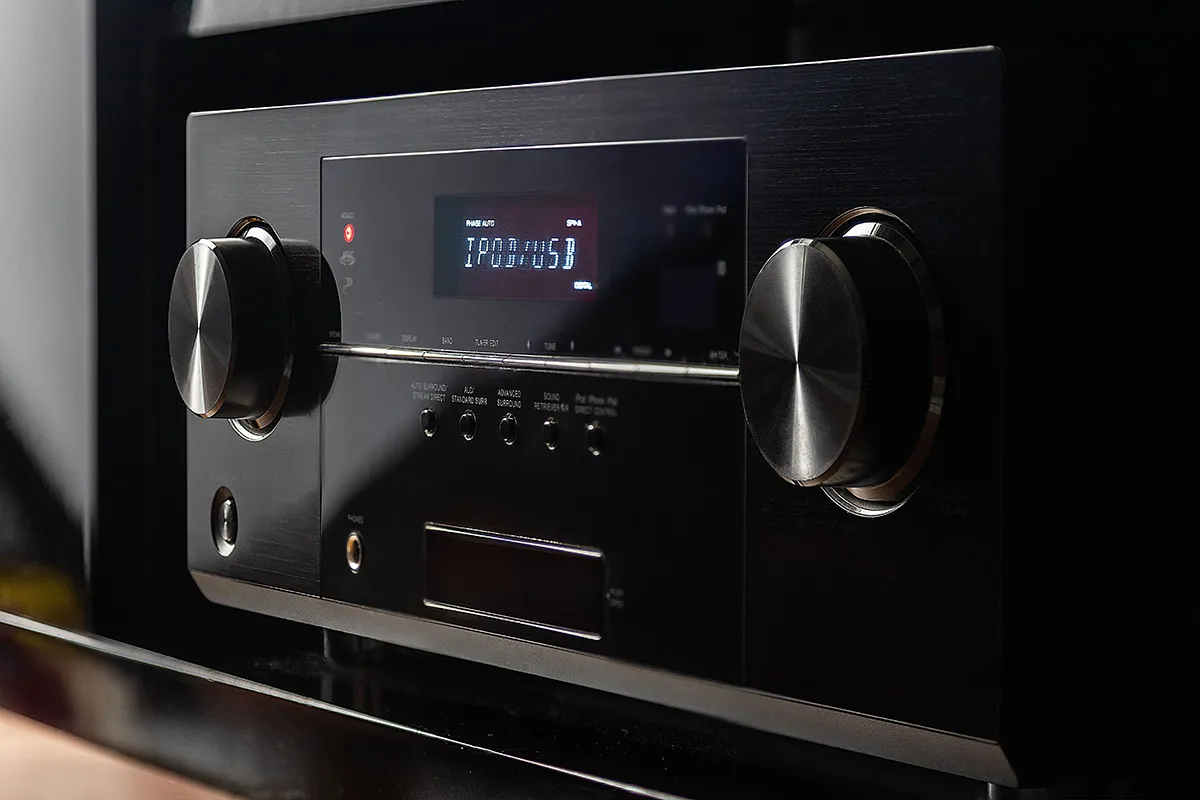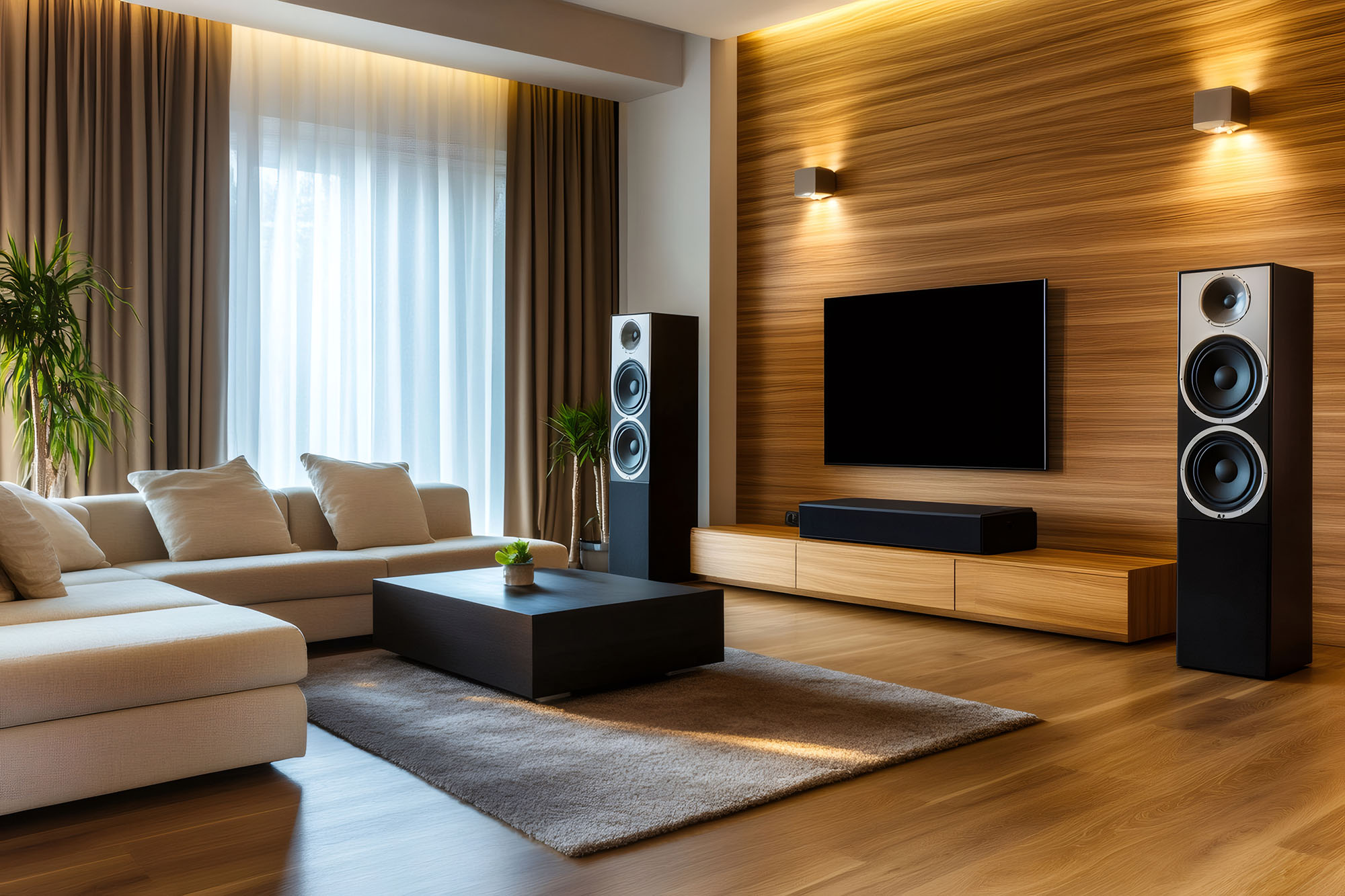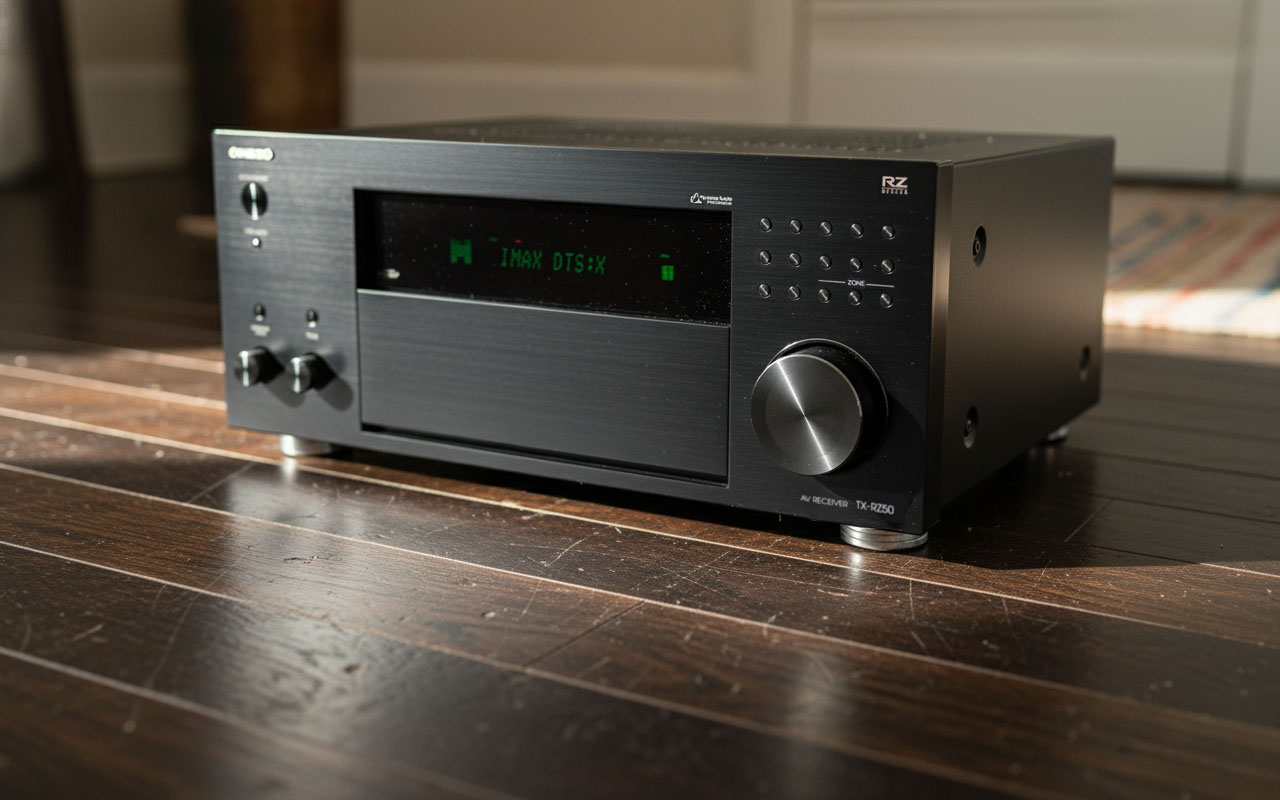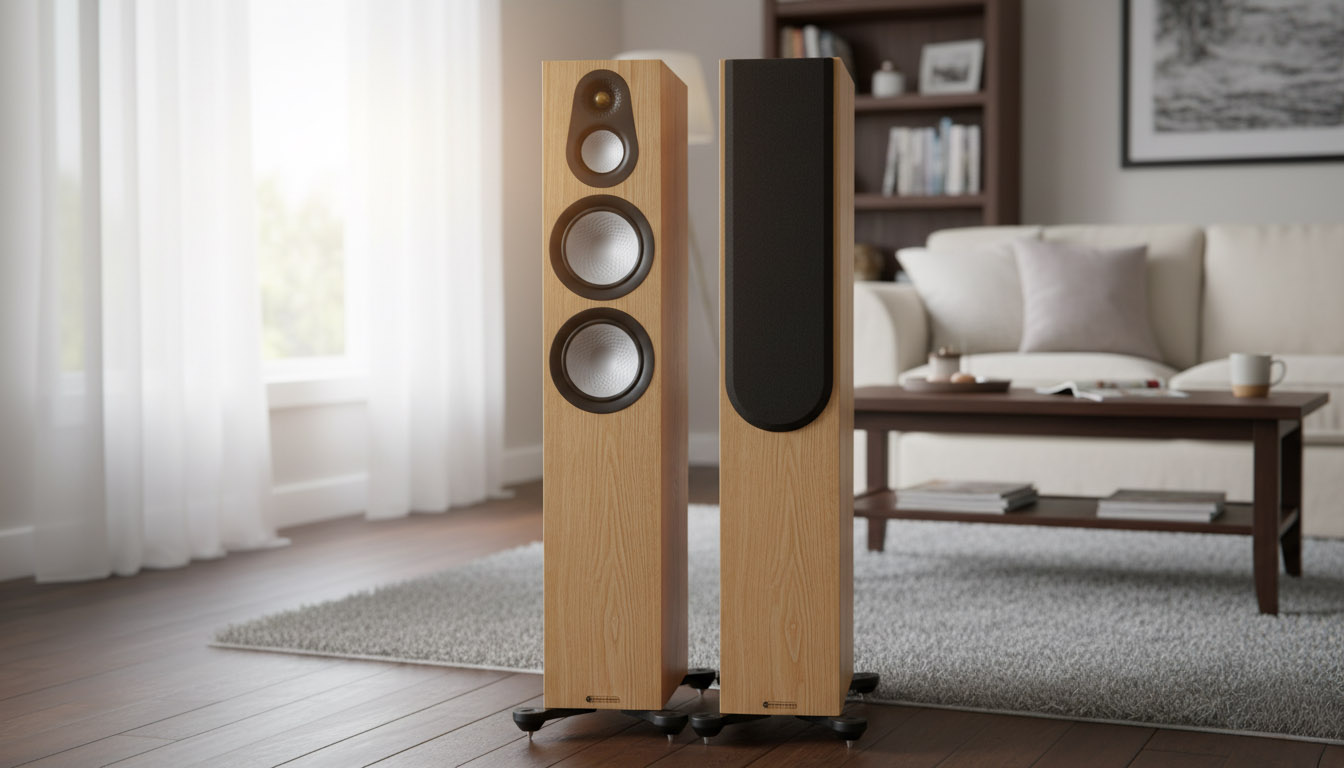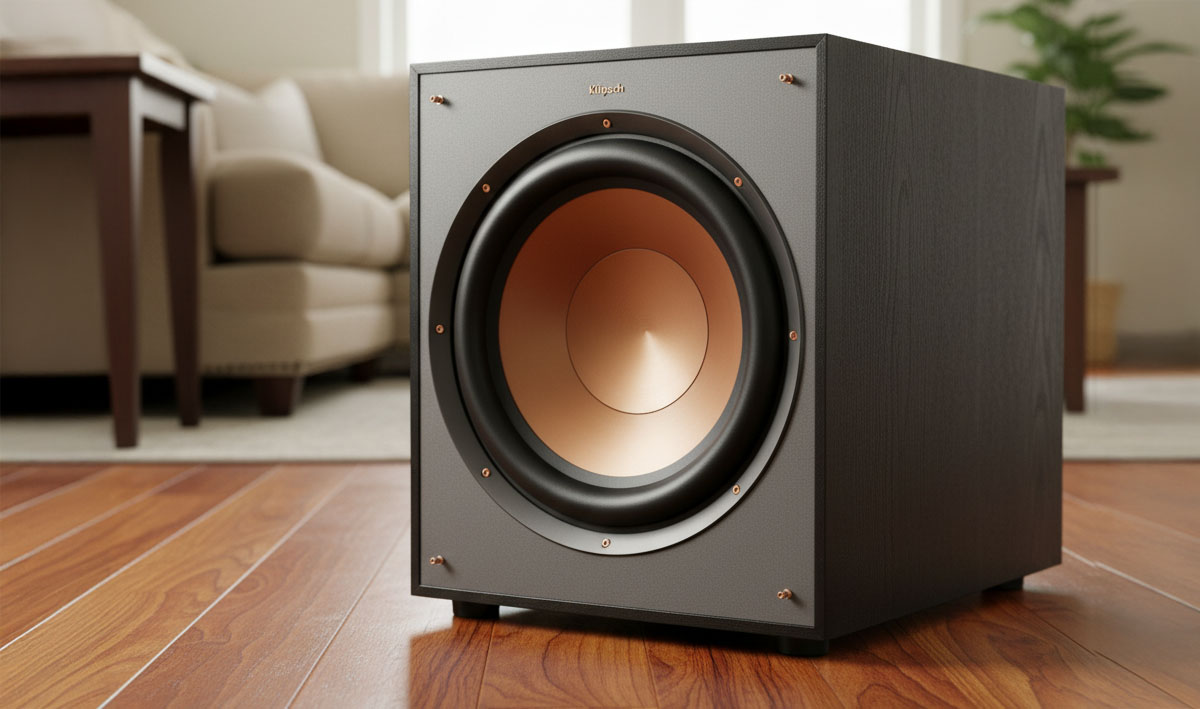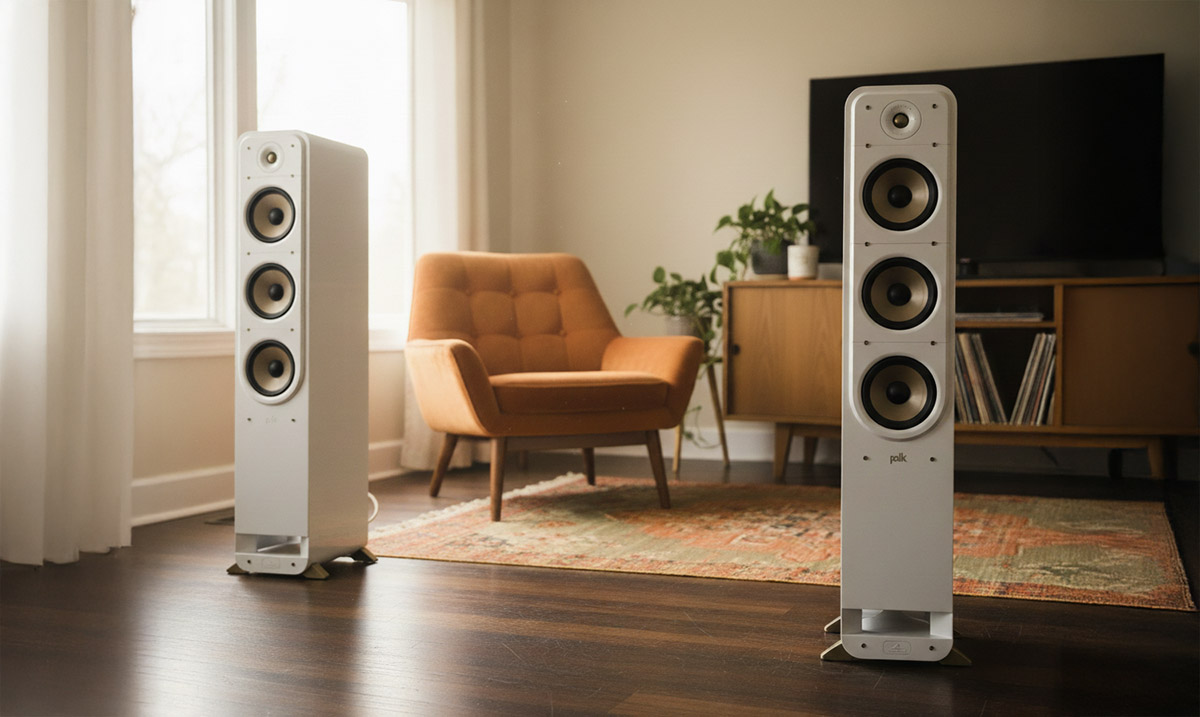Why People Consider In Wall Speakers
You want clean sound without a forest of boxes and cables. In wall speakers promise a tidy room, wide coverage, and a look that blends with decor. They can be fantastic when planned well. They can also disappoint if you drop them into the wrong cavity and hope for the best. Let’s walk through the trade offs, add practical tips, and finish with specific models that are proven winners.
What An In Wall Speaker Actually Is
A typical in wall speaker mounts flush in a stud bay and uses the wall cavity as part of its acoustic system. Most include swing clamps for tool friendly mounting, a paintable grille, and simple two wire inputs. Some designs add a sealed back box so performance is consistent across rooms. Others include pivoting tweeters or contour switches so you can trim the sound after installation.
Pro Tip:
Avoid exterior walls in cold or humid climates. Cutting the vapor barrier can invite moisture issues and draft noise. Interior walls are safer and more consistent for bass.
Why People Love Them
A clean look tops the list. No stands to trip over, no boxes hogging floorspace, and no visual clutter around the screen. Properly placed left and right speakers land at the correct height and distance from the display, which helps imaging. A matching in wall center sits on the same plane, so voices feel anchored to the picture. In multiroom audio, placement freedom is even better. Kitchens, hallways, and open plans feel evenly covered because speakers can go where ears actually are.
How They Can Sound Good
There is a myth that in walls always sound flat or thin. They can sound excellent when you respect the cavity and pick the right model. A well braced stud bay plus a smart crossover yields clear mids and believable bass for music and film. Sealed back box speakers go further by controlling the air volume behind the drivers. Known rear volume equals predictable bass, tighter transients, and less room to room variance. Many in walls also use waveguides to widen dispersion, which keeps off axis listeners happy.
Pro Tip:
Calibrate after the grilles are on. The grille changes the top end a little, so run room correction with grilles installed, then make small trims by ear.
The Big Trade Offs You Need To Know
The wall becomes part of the speaker. That is both chance and risk. Very large empty cavities can create boomy bass at a narrow frequency. Very small or obstructed cavities can choke output. Drywall can buzz if the frame is not gasketed. After you cut, relocation is possible but never fun. Finally, upgrades must respect cutout size, mounting depth, and stud spacing, so you lose some flexibility versus bookshelf speakers on stands.
Pro Tip:
Account for stud bay asymmetry. If the left bay is filled with insulation and the right bay is empty, bass will not match. Add damping to the lighter side so both bays behave similarly. Use a soft gasket, not just screws. Rope caulk or closed cell foam between frame and drywall cuts buzz and raises bass clarity.
When In Walls Are The Right Call
Choose in walls if you are building or renovating, if you want a seamless theater front stage, or if traffic flow rules out stands. They shine as left and right beside a wall mounted TV, as a true behind screen front stage with an acoustically transparent screen, and as surrounds where furniture would block boxes. They also make strong height channels for Dolby Atmos when in ceiling is not an option.
When You Should Consider Another Path
Skip in walls if you rent and cannot cut, if plumbing or electrical lines sit where speakers must go, or if your walls resonate easily. If you like to move gear and experiment often, bookshelf or floorstanding speakers keep options open. When you want a low profile look without opening the wall, on wall speakers are a smart middle ground.
Planning The Cavity
Before you cut, trace the stud layout and open a small test hole to inspect for obstructions. Measure bay height and depth. Insulation helps damping. If the bay is empty and very deep, add a simple back box so bass does not wander. Sealing matters. Foam gasket on the frame and a tidy bead of caulk on seams keep the system quiet and cut rattles.
Extra planning that pays off
Run in wall rated wire, CL2 or CL3, and staple loosely so the jacket does not pinch. Add metal nail plates anywhere the cable passes near the stud face, which protects against future screws. Leave a service loop, an extra foot of cable coiled in the cavity, and drop a flexible conduit with a pull string from attic or basement if you can. Fire blocks are common, so if you pass through one, seal with approved fire stop. In shared walls or apartments, sealed back boxes help isolation and simplify code compliance.
Placement That Pays Off
Front left and right should sit at ear height when seated, equal distance from the screen center, and equal distance from side walls. Keep that symmetry tight for a strong center image. If the model offers a pivoting tweeter or an angled baffle, aim slightly toward the main seats. Side surrounds work best at ear height or a touch above. Rear surrounds like a bit more height in tight rooms. For Atmos height duty on the wall, mount above the fronts and rears, then angle the tweeter toward the couch if the design allows.
Aiming trick for wide screens
Use angled LCR models when the screen is wide. Angled baffles or pivot tweeters that point at the seats preserve clarity without forcing the cutouts too close to the center.
Amplification And Compatibility
Most in walls present friendly loads and moderate sensitivity. Modern receivers drive them without drama. Clean power matters more than huge watt claims. Crossing to a quality sub around 80 or 90 hertz removes heavy bass from the walls and increases headroom. In larger rooms or loud systems, an external two channel amp for the front stage can add grip and ease.
Bass integration that helps
Use a high pass crossover even for big in walls. Offloading deep bass lowers distortion and tightens mids. Place two modest subs at the midpoints of opposing walls or mirror two at the front. This smooths bass across seats and makes the in walls sound cleaner without touching them.
Pros
They look seamless and keep rooms uncluttered. They simplify cable runs. Imaging across the front can be excellent because placement aligns with the screen. Many offer wide dispersion, which helps multiple seats. Sealed back box models reduce sound leakage to adjacent spaces and deliver consistent tuning.
Cons
Cutting is commitment. Relocation later is inconvenient. The wrong cavity can ring or boom if you skip damping or sealing. Very deep bays can exaggerate a narrow bass region, while very shallow bays can thin things out. Drywall can buzz if you over tighten clamps or skip gasketing. Service and upgrades must respect the hole you cut.
Recommended Models That Make This Easy
Budget friendly picks, great for living rooms and multiroom audio
- Polk RC65i or Polk RC85i, easy installs, forgiving tone, paintable grilles that disappear in most rooms.
- Micca M 6S or Micca M 8S, smooth treble and solid value for background music and TV duty.
- Yamaha NS IW760, a horizontal layout that works well as a center or LCR near a TV.
Midrange sweet spot, clear step up in fidelity
- Bowers and Wilkins CWM664, refined mids and a clean top end, popular as a front pair.
- Definitive Technology DI 6.5LCR, broad dispersion and strong dialogue articulation beside a wall mounted display.
- JBL Stage 260W, lively presentation and good dynamics for family rooms.
- Sonos In Wall by Sonance, designed to pair with Sonos Amp and play nice with Trueplay for quick tuning.
Higher performance and theater focused, sealed boxes or THX certified
- Monolith THX 365IW, sealed back box, THX certified, impressive output and clarity for front LCR duty.
- KEF Ci3160RL THX, serious LCR with controlled directivity and excellent imaging behind an acoustically transparent screen.
- MartinLogan Motion XTW6, fast, airy treble from an AMT tweeter and strong dialogue clarity in a slim frame.
- Focal 300 IW6 LCR, dynamic and clean with tight bass when crossed to subs, purpose built for front stages.
Tip, for surrounds and rears, stay in the same brand line when possible so voicing matches across the room.
RELATED: How Much Should You Budget for Your Home Theater
Installation Details That Protect Performance
Use a level and a template to mark the cut. Score the drywall before sawing to control paper tear. Add a thin strip of non hardening rope caulk or foam gasket around the frame so it seals to the wall. If the bay resonates, tuck mineral wool around the back box, but keep material clear of woofer movement. Tighten clamps evenly. Stop when snug, not crushing. Paint grilles with light coats from a distance, heavy paint can clog perforations and dull treble.
Acoustics And The Rest Of The Room
Two small panels at first reflection points, a thick rug, and curtains that close will raise clarity more than any cable change. Once everything is mounted, run your receiver’s calibration, then sanity check distances and levels. Set in walls to small, choose an 80 or 90 hertz crossover, and trim center level by a decibel or two if dialogue sits too low in the mix.
A Quick Decision Guide
Pick in wall speakers if you want a clean front stage, if you can plan the cavity or use sealed models, and if you are ready to pair them with a sub. Pick on wall speakers when you want a flat look with simpler installation. Stick with bookshelf or towers when you prize total flexibility and the last bit of dynamic slam. None of these choices is wrong. The best one fits your room, your habits, and your budget.
Bottom Line
In wall speakers deliver a neat, integrated theater and a relaxed living room when you treat the wall as part of the system. Respect placement, seal the frame, and cross to a capable sub. Choose proven models for your budget and role, then give them a careful install. Do that, and the speakers vanish, leaving picture and sound that feel like they belong in the room.
Teksignal.com participates in the Amazon Services LLC Associates Program, an affiliate advertising program designed to provide a means for sites to earn advertising fees by advertising and linking to Amazon.com. The reviews on this site are hands-off consensus reviews. We analyzed owner feedback across the internet and manufacturer documentation. We summarize sentiment; we do not republish individual user posts.




